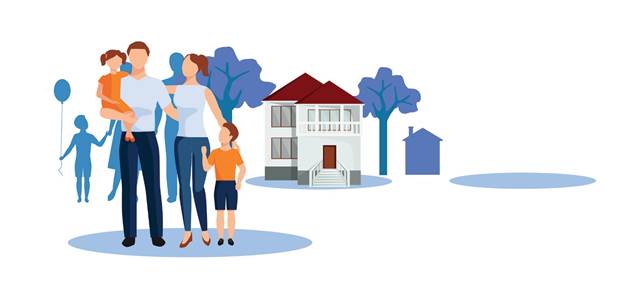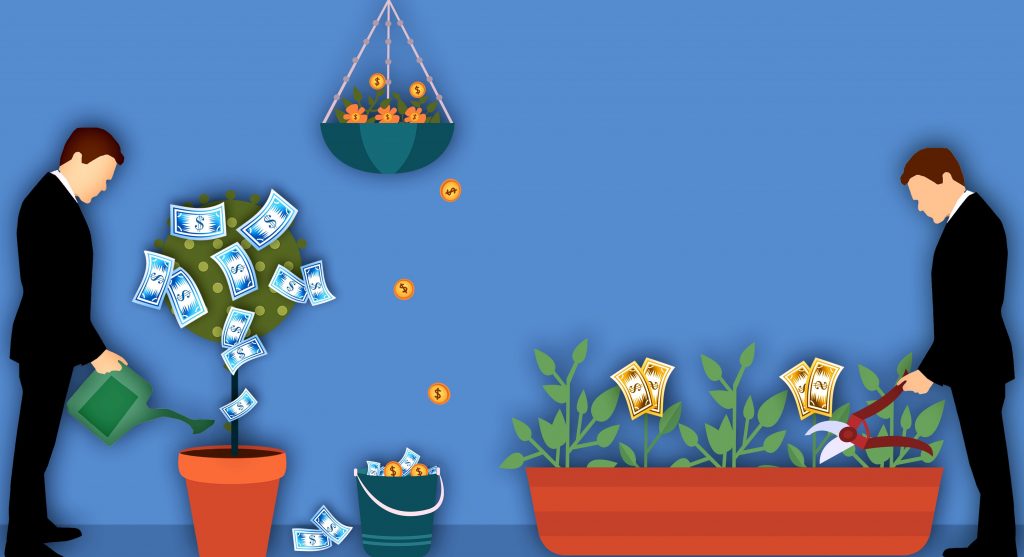Egypt is home to an emerging microinsurance market of 27 million people, representing 39 percent of the working population, according to Atlas Magazine. Earning $5-15 a day, the vast majority of this segment is unbanked and unfamiliar with insurance products, but new regulations are encouraging insurance companies to expand their services.
Microinsurance is one of the major tools of microfinance, according to a report by Japan’s International Cooperation Agency (JICA). The International Association of Insurance Supervisors defines microinsurance as accessible by low-income people “run in accordance with generally accepted insurance practices.”
In Egypt, there is a strong potential for growth with 270,000 people (0.32 percent of the population) covered by microinsurance, according to a MENA Insurance report, and the Financial Regulatory Authority (FRA) has supported the establishment and growth of microinsurance. A 2019 JICA report says that from 2015-2017, a microinsurance platform was established at the Insurance Federation and the FRA issued a directive laying the foundation for microinsurance in Egypt.
Ayman Kandeel, managing director of AXA Life Insurance and chairman of AXA General Insurance, and Makeen Lotfy Abdullah, business and products development chief at gig-Egypt Insurance and head of the technical microinsurance committee at the Insurance Federation of Egypt, talk about microinsurance in Egypt today.
Below are edited excerpts from the interviews.

How has the microinsurance market performed in the past three years?
Kandeel: Ten years ago, the idea of life insurance for low-income segments was launched by microfinance institutions (MFIs) so people’s debt would be repaid if they died. During the past three years, two main events took place. First, the FRA issued regulations to make life insurance mandatory for the vast majority of MFI borrowers and this increased the penetration of life insurance. Second, many insurance companies started pursuing new schemes: hospital cash (which provides daily hospital cash in a fixed amount if the insured is hospitalized due to an accident or illness. The amount is paid on top of any of the insured’s existing medical benefits,) accident coverage (a form of health insurance that covers any accidents. It provides financial protection to the insured members against uncertainties such as accidental death, accidental bodily injuries, and partial/total disabilities, permanent as well as temporary disabilities resulting from an accident,) and life insurance linked to savings (a regular savings plan with life cover where you put away money each month into a savings and investments fund, normally for a set period of time.)
Abdullah: Microinsurance has been a priority for regulators and the insurance sector for the past three years. Insurance penetration in Egypt is still very low, about 1 percent of the population. One of the most important decisions the FRA issued recently is allowing integration between insurance companies and microfinance institutions. Another milestone is the Administrative Control Authority’s decision in 2018 to make it obligatory for any client who registers in microfinance, representing about 3 million customers, to have credit life insurance. We see a considerable demand for microinsurance, however, it is still less than what we hope to reach. A lot of work and innovation has to be done along the way. We have reached millions, but the market has an appetite for more.
How does microinsurance play a role in financial inclusion?
Kandeel: Insurance is one of the most important tools to manage risks. Low-income segments can easily fall into deeper poverty when any shock hits a household. When there is a safety cushion – in our case microinsurance – the impact of the shock is alleviated by the amount paid out. On another hand, financial inclusion, in its essence, means the ability of low-income segments to access financial services, among them insurance.
Abdullah: Microinsurance will be the most important tool for financial inclusion. The majority of beneficiaries are seasonal workers with no fixed income who do not belong to any syndicates. They have no life, health or property protection. Microinsurance can generate financial inclusion at large, as it will act as a guarantee for financiers when it comes to investing. It will be the bridge that people will cross for financing.
What makes a microinsurance product successful in Egypt?
Kandeel: The first and essential factor is simplicity: insurance coverage that can be explained in two or three minutes or a couple of text messages. It should specify what risks are covered, avoid confusing options, and minimize any coverage exclusions. The second important factor is accessibility: How can the target segment easily buy insurance? Accessibility here means where to buy it, how to activate it and, of course, affordability for the target segment. The third important factor is the ease of making a claim and prompt payment because this is the only way to build public trust.
Abdullah: The Insurance Federation in Egypt, in cooperation with the regulator, put together a concise policy that administrative contracts should avoid technical jargon. This was put in place to make it easy to understand a policy’s requirements. Secondly, Egypt is doing its best to reduce the cost of insurance. Without good pricing, products will not be affordable for the target group. Microinsurance in Egypt can start at EGP 50 ($3.18) per year. Today, any Egyptian can afford this. Thirdly, Egypt changed the distribution method for a better reach. It is now feasible for clients to receive their policies by email or WhatsApp from the comfort of their homes. They also can pay the fees in installments through a Meeza card, ATM or digital wallet. Reimbursements and claims also can be digitized.

What is unique about the Egyptian microinsurance market?
Kandeel: The uniqueness comes from the main angle: social solidarity. In Egyptian communities, especially in rural areas, informal social solidarity usually prevails. If someone faces a crisis, many people quickly offer support, financial or non-financial. So when it comes to explaining insurance to low-income segments as “one form of group solidarity among people who might not know each other to support some of them in case of shock,” the notion and purpose become much clearer.
Abdullah: Egypt’s edge is our massive scale. Generating profit in microinsurance requires a large pool of potential customers, which we already have. With Egypt’s low penetration rate and high population, the demand for microinsurance is extremely high. The market now incentivizes players to tailor their products to the needs of the population. It is a very niche market to be explored. Egypt now has a clear regulatory framework that encourages companies to invest in this segment in cooperation with post offices, banks and distributors.
How is your company contributing to the growth of the market segment?
Kandeel: AXA strongly leverages expertise developed in Latin America, Asia and Africa by other AXA entities. This enabled AXA-Egypt to become a key player. Launching innovative products through non-traditional distribution channels is a key factor. In addition to extending life and hospital cash to a large number of microfinance borrowers, AXA is a key player in insurance federation forums, bringing into the market new distribution models.
Abdullah: gig-Egypt is a pioneer in microinsurance in Egypt. We took the first step by admitting we did not know how to proceed, and so we had to research. We studied business models of other countries and ‘Egyptianized ’ them and got them approved by FRA. Our distribution channels are diverse and among the largest, our scope is non-life insurance policies. We have around 1,000 new clients per day. Eighty percent of our portfolio is 25-45 years old. They are seasonal workers with a non-fixed income in agriculture, fisheries, or construction, and they represent a huge part of the informal economy. We have been growing 40 percent year to year. In November, gig-Egypt was approved to use digital signatures in insurance policies. In 2021, all microinsurance will be 100 percent digital.
Do you see Egypt’s government and the regulator as supportive?
Kandeel: The support of regulators is a key success factor, and in recent years the FRA has launched multiple initiatives to support financial inclusion. The FRA also is in constant dialogue with industry players through the federation to help address any challenges.
Abdullah: This year, a new insurance law will have a comprehensive chapter on microinsurance. [Egypt’s citizens] will be obliged, when applicable, to register for twenty-one new types of insurance including shop and retail insurance, school insurance, mosques and churches insurance, divorce insurance and cyber insurance. The law is very comprehensive and will solve a lot of problems.
What are the challenges facing microinsurance in Egypt and what has been limiting growth over the past five years?
Kandeel: Target segment awareness and a lack of understanding regarding protection needs are key challenges facing the industry at large, as well as developing new distribution channels. The absence of data on the target segment limits the ability of companies to design affordable insurance products.
Abdullah: We had no specific laws related to microfinance or microinsurance in Egypt. Now, the regulator is very dynamic. From the supply side, market players were not agile enough to tailor appealing products. Companies were copying and pasting with no research on what their target audience needed.

What are some international emerging trends and promising innovations that might be adopted in Egypt?
Kandeel: Distribution of insurance through mobile network operators is a successful model around the world. We have witnessed this model’s success with several AXA branches globally, and while it has not yet taken off in Egypt we believe implementation will be easy given our access to successful global experiences. Other models related to non-life insurance, including fires, national catastrophes and business interruptions are offered in many countries.
Abdullah: Southeast Asia and Africa are the best models to learn from. Many countries succeeded in microinsurance because of government support. It’s not about trends. It is about understanding and studying your market and tailoring something to attract your population. For example, at gig-Egypt we launched a family health insurance plan and issued the first plan for small farmers who rely on one livestock only.
What additional products are important for the growth of the insurance sector?
Kandeel: All products are important – the risk exposure of low-income segments is the same as for all other segments of any population. They face the same worries and concerns, and once hit by the risk they can easily fall into deeper poverty. The key is really simplicity, affordability and accessibility.
Abdullah: We believe in having a diverse portfolio of products that cater solely to the Egyptian market. On top of our classic products like life, health and accident coverage, we offer cancer insurance and funeral expense coverage, as well as coverage for small kiosks and hairdressers.
How do you see microinsurance evolving in the next 10 years?
Kandeel: With the enactment of new laws related to financial inclusion, the support of regulatory authorities, issuance of the upcoming insurance law and rising interest in insurance companies, I can see high potential for growth of this industry over the coming five years. It will give vulnerable low-income people a set of insurance plans.
Abdullah: This is the real market. The insurance market is worth almost EGP 35 billion. I believe microinsurance will triple this number in the next decade.







